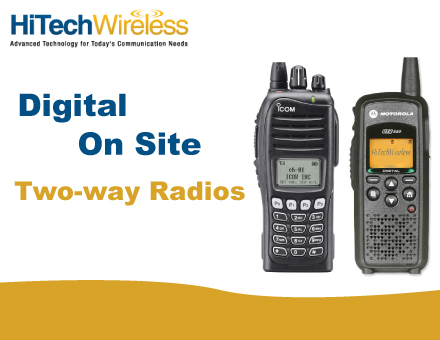The Ins and Outs of Moving from Analog to Digital Two-Way Radio Technology
18th Mar 2014

It's quickly becoming a digital world, and two-way radio technology is certainly no exception. Improvements in audio quality and performance in two-way radio communication has unveiled digital technology on the two-way radio scene. Cutting-edge digital platforms haven't made older, dependable analog platforms obsolete -- yet -- but it may be an inevitability worth considering. Two-way radios are constantly evolving in an effort to achieve the highest possible communication capabilities to best serve business, the public safety sector, the government and more. Forewarned is forearmed, however, and keeping informed on the subject is your best bet.
Why the Move to Digital?
If digital technology didn't haven't something going for it, it wouldn't be receiving the attention that it has. Analog platforms would happily continue undisturbed and there would be no need to upgrade existing two-way radio systems. But, in fact, since the 1990s, radios used by public safety personnel in the United States have already made the upgrade from analog to digital because of certain shortcomings in analog transmissions. Part of the switch to digital radio communications is due to North America's collaborative effort, Project 25: a set of digital radio standards used by various agencies that make up federal, state and local emergency communication systems. In the event of a disaster, all two-way radios employed by emergency agencies in the U.S. share the same digital compatibility and can easily transmit audio and data between various departments and organizations.
Digital two-way communication does have some distinct advantages or analog:
- Longer battery life
- Text messaging capability
- Availability of software applications
- Purer, clearer audio because transmission imperfections are, in essence, smoothed out and cleaned up via digital error correction technology
- Improved privacy and encryption
- Capacity for GPS
- Longer, clearer signal
- More simultaneous talking paths
- Dedicated emergency channel
Digital two-way radio transmitters use non-continuous transmission over Time Division Multiple Access digital radio protocol, or TMDA. Only a small portion of channel capacity is apportioned with TMDA; transmission are divided into separate time slots that allow for rapid transmission over a shared frequency channel. Therefore, battery life is extended because of more efficient use of transmission broadcast over the licensed spectrum. TMDA digital radio protocol also allows for text and data transmissions. Thanks to cutting-edge digital technology, two-way radios aren't just for voice transmissions anymore.
Migration from Analog to Digital Made Easy
Digital two-way radio manufacturers realize that upgrading from analog to digital two-way communication could turn into an expensive, burdensome venture, which is why they've designed newer digital radios that provide an easy migration pathway between the two modes. This migration pathway allows the radio user to employ either analog or digital mode, making analog radios still serviceable to workers. However, bear in mind that when digital two-way radios are used in analog mode, the improved features of digital platform are not in play.
New technology eventually pushes older technology to the wayside, no matter how dependable that older technology may have been. Upgrading to digital two-way radios now makes sense, and doing so while both analog and digital modes are still in use makes even greater sense.
